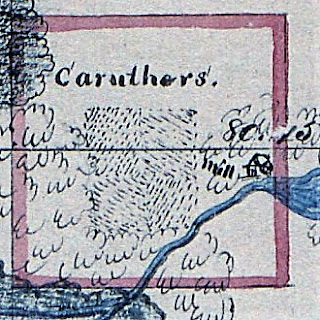Frontierswomen
of Central Florida
A
Women’s History Month Tribute
By
Richard Lee Cronin, CroninBooks.com
13 March 2022
Day 13
CitrusLAND is observing Women’s History Month by
honoring extraordinary central Florida frontierswomen. And as we celebrate
women’s History Month throughout March, we are also promoting each day a local
History Museum, listing days and hours of operation.
See
our History Museum of the day in this Post
Miss Winifred #Hodgson is yet another fascinating Central Florida frontierswoman who never made it into local history books, despite the fact a portion of the land this lady once owned here in CitrusLAND is likely the best-known real estate in all the World.
This author stumbled upon the courageous young Winifred by accident one day while preparing for a history talk at an Orange County library. While perusing the 1890s land ownership map of the area I was to be discussing, the name “Hodgeon” caught my eye. And it was not so much the name, but how often it appeared in one-square mile “Sections” of South Orange County. A name I had not previously come across in local history, a little research found that this person, “W. A. Hodgeon,” was noted as owning over a thousand acres. The land owned by this individual was west of the 1890 railroad city that is now Mackinnon Ghost Town.
Much like Mackinnon had become wrongly identified as McKinnon, I soon discovered the W. A. Hodgeon person was in fact W. A. Hodgson, a remarkable young Irish woman who had crossed the Atlantic in 1886 at age 19 with her mother. Arriving in New York that year on August 23rd, within three years, Miss Winifred Hodgson was the owner of 1,300 Orange County acres, some of which is now the Seven Seas Lagoon at Walt Disney World.
Winifred Hodgson’s 19th
century property is now Seven Seas Lagoon
Born 6 March 1865 at Clonygowan, Ireland, the family of Winifred Hodgson had relocated to the outskirts of London, England, placing them in 1880 near the headquarters of Florida Land & Colonization Company, the English firm that was developing Sanford, Florida as well as a large portion of central Florida south of Lake Monroe.
Winifred A. Hodgson sailed the Atlantic, dabbled in South Orange County landownership in a big way, and appeared ready to be an active player in developing the region. Winifred was not the only land speculator with big plans, but she was one of but a few females who dared tackle the task of city building at a time in history when women rarely entered the business world.
While living in Florida, Winifred Hodgson met another land speculator from back home. Piers Eliot Warburton had come to Florida in the early 1880s with a Sarasota developer, but his land interests soon branched out to include Orange and Polk counties.
Winifred (Hodgson) & Piers E. Warburton
Winifred
Hodgson married Piers Warburton, and for a time lived in the new town of “Acton”,
near Lakeland, which they developed together. Then came the devastating freeze
of 1894-95, a weather event which brought about an abrupt end to most every CitrusLAND
development in America’s 19th Century Paradise. Winifred and Piers
returned to England.
[Further
reading: Seven Seas Lagoon and Winifred Hodgson will be found in Orlando
Lakes: Homesteaders & Namesakes, an encyclopedia of 303 central Florida
lakes settled during the 19th century, by Richard Lee Cronin]
Elizabeth #Hull
married James Caruthers at Burke County, Georgia, in 1800, and relocated in the
1840s to the vicinity of Wildwood, Florida. On 29 November 1851, a homestead
deed was issued by the Land Office with the following wording, “Elizabeth,
widow of James Carruthers (sic), and his six children: Thomas; William Allen;
Edward Jackson; William Wright; Celia Ann and Andrew Young Carruthers (sic),
being patent 389 to James Carruthers (sic).”
The parcel deeded to Elizabeth Caruthers and family
was 160 acres east of Lake Panasoffkee, near where the town of Coleman is now.
James died after filing for a homestead before a deed had been issued, so,
considering the five-year residency requirement, the family had settled on the
land before 1846. The government however had not yet surveyed the area where
Caruthers homesteaded. Not until April 1849 did surveyors reach the Caruthers
property, and as they mapped the area, they not only indicated the location of
the Caruthers homestead - they also showed the existence of a Caruthers “Mill.”
Caruthers 1849 Homestead now in
Sumter County, Florida
Widow Elizabeth Hull Caruthers was listed in 1850
Marion County as family #332. She was a neighbor to Evander Lee, the Patriarch
of Leesburg. Elizabeth’s neighbor, family #333, was William Wright Caruthers, a
brother of James Caruthers. William was listed as the husband of Delilah #Hall
– his second wife, as his first, Millicent #Hull, had died in 1844.
Brothers James and William Caruthers had married
sisters Elizabeth and Millicent Hull at Burke County, Georgia. They then
relocated to the wilds of Wildwood. James Hull followed, as did others in a
pioneering clan who originally settled in a barren Marion County, a region that
in 1853 became a Sumter County. (In 1887, a portion of Sumter became Lake
County).
Although there were neighbors, Elizabeth (Hull)
Caruthers was among the bravest of brave frontierswomen to tame the central
Florida wilderness. Descendants of Elizabeth eventually relocated again, a few
to Umatilla and Eustis, others to Hawkinsville on the St. Johns River. As the
earliest of pioneers, each accomplished amazing feats, likely doing so because
of the pluck and courage each witnessed in their brave pioneering mentor – Elizabeth
(Hull) Caruthers.
[Further
reading: James Hull and other descendants of the Burke County, Georgians who
relocated to central Florida, can be found in Tavares: Darling of Orange
County, Birthplace of Lake County, by Richard Lee Cronin. Descendants of
the Caruthers clan relocated to Umatilla and portions of Orange County that are
now Lake County].
Joanna #Immel
married Alexander St. Clair-Abrams at Atlanta, Georgia on August 24, 1864. She
was the daughter of a German immigrant who became Atlanta’s first baker, according
‘Pioneer Citizens, A History of Atlanta’. Known merely as P. J. Immel,
he married at Atlanta in 1847, and with wife Emily, their first child, Joanna,
was born February 22, 1848.
Joanna’s father died at
Atlanta in 1861, so her mother Emily remarried in 1866 to Marcus Roberts, who
died soon after. A Widow for a second time, Joanna’s mother followed her
daughter south to Florida in the mid-1870s.
Joanna Immel and St.
Clair-Abrams married at Atlanta three months before General Sherman captured the
city and set it ablaze. An estimated 3,000 buildings were destroyed before the
general began his infamous ‘March to the Sea’. Amid a Georgia Capital still in
ruins, on September 26, 1865, a son, Alfred St. Clair-Abrams, was born to Joanna
and Alexander St. Clair-Abrams. A baby girl, Irma Frances St. Clair-Abrams, was
born in February of 1868.
For several years, Joanna
& Alexander St. Clair-Abrams lived in New York City, but eventually found
their way to Orange County, Florida. The family’s homestead was located north
of Mount Dora (now in Lake County).
1875 St. Clair-Abrams Homestead now
in Lake County
Lake Joanna, larger of
three lakes on the family’s homestead, was the centerpiece of a citrus grove
which encompassed the two smaller lakes as well, Aflred and Irma. An Attorney,
Alexander spent much of his time in Orlando while Joanna managed the homestead.
In 1881, the family’s business interests expanded to include founding of the
town of Tavares.
Following Florida’s Great
Freeze of 1894-95, when much of central Florida suffered property losses and numerous
towns failed, Alexander and Joanna relocated one final time, to Jacksonville,
in Duval County, where Alexander again established a law practice.
Joanna, at 56 years of
age, died soon after their move to Jacksonville, but even in death, Alexander
was not yet ready to let go of his wife and business partner of 34 years. He
retained noted America Architect Henry John Klutho to design a family mausoleum,
where Joanna (Immel) St. Clair-Abrams was reinterred – and now rests alongside
her husband.
[Further
reading: Lake County Historian Bob Grenier has recently released his latest
book, Major Alexander St. Clair-Abrams, The Unparalleled Career of the
Perfect Southern Gentleman. Also, for additional info on the family, see
Tavares: Darling of Orange County, Birthplace of Lake County, by Richard
Lee Cronin].
Todays featured Historical Society
Train
at Sorrento depot photo above from R. L. Cronin Book
Tavares:
Darling of Orange County, Birthplace of Lake County
East Lake County Historical Society
Society
meets monthly in Sorrento
Membership
Information – P. O. Box 685
Sorrento,
Florida 32776







No comments:
Post a Comment